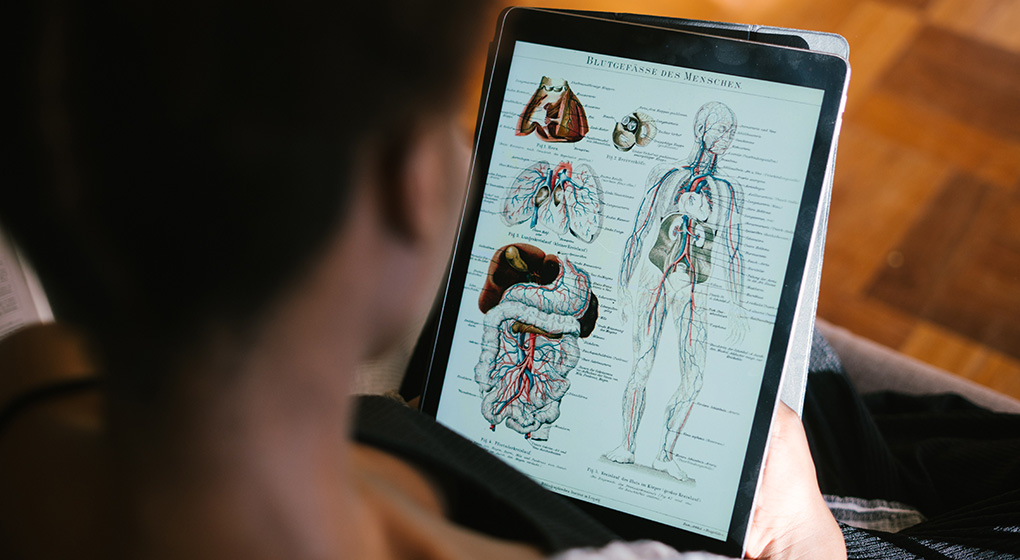Think back to the words you learned for body parts when you were a kid. Before you even knew what your knees were, you probably knew the head-shoulders-knees-and-toes song (although hopefully a better version than the one currently most popular on YouTube). Other body parts you likely can’t remember when or how you learned their name, you’ve just always known that was your eyebrow, this was your chin, etc…
And then there are the other parts. The ones no one told you the names for and the only parts of your body that grown-ups seemed to want to pretend didn’t even exist. These are the parts most sex educators call “private parts”. For several reasons I prefer and use the term “middle parts”. A doctor would call these parts your genitals or your sexual anatomy.
All Ignorance Is Not Created Equally
As kids we are usually kept in the dark about these parts of our body, which is very confusing for us since it’s rare for anyone to even bother explaining why these parts are so different from other parts.
Even so, most of us learn words eventually. But our enlightenment into the world of sexual anatomy is never evenly spread. We are almost always ignorant of some parts. Most kids learned the word penis. Some learned the word vagina. Very few learned vulva. This isn’t a coincidence. Just as women are treated differently in the world, sexual anatomy that we most often associate with women is treated differently. And by differently what I really mean is with less seriousness, less specificity, and more negativity.
Vulva and Vagina
The distinction between the vulva and vagina is so seldom made that even in most research about our knowledge of body parts the terms are collapsed.
The problem with this is that they are two very different body parts.
The simplest way to distinguish them is to explain that the vulva is the part on the outside, the part you can see, and the vagina is the part on the inside. Sort of like the difference between your lips and your throat. Few people would suggest that those two terms and body parts are, or should be, interchangeable.
Without the use of a speculum (or several fingers) you can’t see the vagina.
When you look at a naked body that has a vagina and vulva and clitoris, the part you see without an internal exam is the vulva.
The vulva includes the series of folds of skin (the labia) as well as the skin and area around them.
Why So Many People Get It Wrong
We get it wrong because no one teaches us otherwise. Sex education for children is sorely lacking and once we hit 18 we’re considered adults, no longer in need of sex education.
Unfortunately many sex educators and sex ed books for kids continue to be a part of the problem to this day.
I hear from both educators and parents that vulva seems like too grown up a word.
People who are comfortable talking about body parts at all seem more comfortable with vagina.
But this is only because vagina has become the word that gets used. Vulva can feel strange because it is strange, in that we don’t say it very much. But say vulva 100 times in a row and two things happen; first, it starts to sound like a really weird word. And second, it doesn’t feel so strange to say it.
Some parents feel like it is too sexual a word. They sometimes say the same thing about the word clitoris. Again, this is understandable, if the only time they hear these words is in the context of adult sexuality, then it can feel awkward or even wrong to point out to your 1 year old that they have a vulva (just as we point out that they have a belly button). But the word itself isn’t inherently more or less sexual than any other word. And more importantly, it’s the word that a teacher, doctor, or nurse might use if they want to talk to a child about their body.
Why Does It Matter?
Some people (usually those of us who don’t have a vulva) respond to this information by asking, who cares? If we know what we’re talking about, why does it matter if we call it the vagina or the vulva? In no particular order, there are two very important reasons for kids to know the word vulva and what it means.
The first is a matter of health and safety. Whatever language you choose to use in your house, every child should also know the words that a doctor, nurse, or teacher might use to describe a child’s body. This is important because if there’s something wrong with a child’s body and they don’t have the language to tell us what is wrong and where, it’s simply harder for them to tell us anything.
Children do need help distinguishing the different parts of their body and helping them do this brings more awareness to these parts. That might seem scary to a parent who doesn’t want their child to have too much awareness of a part of their body thought of as sexual, but from a health perspective it’s crucial.
It’s also crucial for children who have experiences sexual abuse or assault to be able to explain in specific and clear language what was done to them and where.
It also matters because there’s a reason most of us remain so ignorant about these body parts. In a word that reason is sexism.
Bodies with vulvas are treated in ways that are fundamentally different from bodies with penises. You probably know those bodies get paid less for the same work, are subjected to higher rates of violence, and tend to be studied by medicine less frequently and less carefully, resulting in a much less robust body of knowledge about, for example, the vulva than the penis.
It matters because being able to distinguish one part from another is one of the ways we can start noticing more nuanced sexual response and experience. When it’s all just “down there” there’s a lot less to say about what it feels like when we’re getting busy “down there”.
The sex writer and cultural critic Susie Bright once commented that she has never met a man who didn’t know where his penis was and how to touch it to feel good. She went on to point out that she could not say the same for women.












